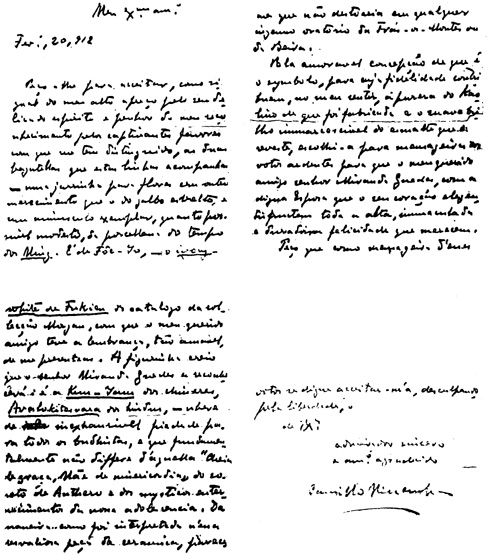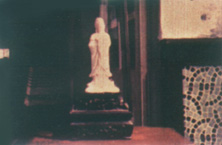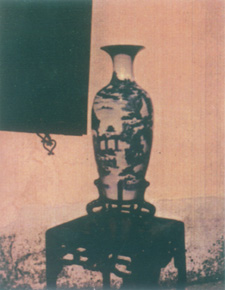There are very few letters written by Camilo Pessanha. This is the natural result of his voluntary seclusion from the society in which he lived. He reveals this aspect of his personality in a letter he wrote from Leça de Palmeira to Alberto Osório de Castro, his closest friend, on the 24th of May, 1907: "I have spent long years without writing a single letter... to anybody!".
This paucity of correspondence is in marked contrast to the output of another hermit who made his home in Tokushima, Japan, a long-standing friend of the author of Clepsidra. Venceslau de Morais wrote literally hundreds of letters. I am aware of only seventy-two letters written by Pessanha to his family (father, Francisco de Almeida Pessanha; mother, Maria do Espírito Santo Pereira; cousin José Benedito Pessanha, and aunt, Maria Augusta de Almeida Pessanha), and to his friends (Ana de Castro Osório, Alberto Osório de Castro, João Baptista de Castro, Carlos Amaro, Henrique Trindade Coelho, Mário Beirão, Francisco Xavier Anacleto da Silva and António Pinto de Miranda Guedes).
There must have been letters written to Fialho de Almeida, Gomes Leal, Venceslau de Morals, Pires Avelanoso, João Jardim, Ayres de Castro e Almeida, Abel Aníbal de Azevedo and his brothers which, over time, have been lost or are yet to be found in some long-forgotten collection.
The fact that Pessanha's poetry is highly subjective and makes allusions rather than explanations (the touchstone for true poetry), makes his letters even more valuable. They offer a fundamental insight into his world vision and complex psychology. They include some biographical information which helps us to trace a path which is as obscure as Clepsidra. The unpublished letter which I shall discuss in this article was kindly lent by Ms. Maria Eduarda de Miranda Guedes, the daughter of Mr. António Pinto de Miranda Guedes to whom the letter was originally addressed. This letter gives an indication of Pessanha's interest in Chinese art. He carefully collected pieces over a period of around thirty years. The poet donated two collections of Chinese art to his motherland, one in 1915 and the second shortly before his death in 1926. The fast collection was kept for ten years in storage in the National Museum of Art in Lisbon, neglected by the head curator José de Figueiredo. It was later rejected by the Museum of Ethnography in Belém and ended up in the Machado de Castro National Museum in Coimbra where it was meticulously arranged under the direction of António Augusto Gonçalves, the museum's founder. The second collection only arrived in Portugal in 1928, sent by Governor Maia Magalhães. It was sent from Lisbon to the Exhibition in Seville where it met with resounding success. Nevertheless, when it returned to Lisbon it was found to have been irreparably damaged: six pieces had been removed.
Camilo Pessanha's collection consists of three hundred eclectic pieces including paintings, calligraphy, ceramics, embroideries, clothing and cloisonné. It is all kept in the Machado de Castro National Museum in Coimbra except for the two pieces mentioned in this letter which were donated to the Macieirinha Museum in Oporto by António Pinto de Miranda Guedes' heirs.



My dear friend, 1
I beg you to accept, as a sign of my admiration of your refined spirit and in response to the charming favours with which you have honoured me, the two playthings I am enclosing in this letter a vase with no merit other than its graceful shape, and a tiny, modest, example of Ming porcelain. 2 It comes from Fok-Io, the Fukien ivory white which appears in the catalogue of the Morgan collection which you so kindly gave to me. I think you will recognise the statuette: it is of the Chinese goddess Kun Iam3, the Hindu Avalo-Kitesvara, the fountain of lasting piety for all buddhists and which is not fundamentally different from the "Mother of mercy, full of grace" of Antero's [de Quental] sonnet and the mystical endearments of our youth. The effect of this modest little ceramic piece made me think it would not look out of place in some simple shrine in Trás-os-Montes or Beira.
I chose her for her symbolic charm enhanced by the purity of the porcelain and the gently lasting shine of the glaze to serve as a messenger of my most sincere hopes that my dear friend and your delightful wife, object of your heart's desire enjoy the greatest, purest and most lasting joy of which you are both deserving.
Please accept her as a carrier of these wishes, and excuse the liberty I have taken in sending her.
Your sincere admirerand grateful friend,
Camilo Pessanha
NOTES
1António Pinto de Miranda Guedes (Poiares da Régua, 1875 Oporto, 1937) worked in the Civil Service as a civil and mining engineer in São Tomé, Angola, India, Mozambique and Macau. While he was in Macau he directed the Public Works Department and was president of the Military Club. During this time, in the first decade of this century, the Military Club began to organise many more cultural activities and this was when he met Camilo Pessanha, introducing the poet when he gave a talk on Chinese aesthetics. He regarded the author of Clepsidra as a "brilliant, complex spirit who, in the dazzling proof we have of his skill, honours his country... His original, scintillating approach is the dominant feature of his great talent and he uses this to produce work which verges on eccentric as do all truly higher, independent spirits". (Verdade, Macau, 2nd of June 1916).
Camilo Pessanha dedicated the "Eight Chinese Elegies" which he translated from the original into Portuguese to his friend.
2The Ming dynasty flourished in China from 1368 (following on from the Yuan dynasty which was founded in 1280) until 1644 when it was replaced by the Qing, China's final dynasty. Dr. Sun Yat Sen founded the Chinese Republic in 1912. There is a group photograph of Sun Yat Sen which includes Camilo Pessanha and the Governor of Macau.
3 The Buddhist goddess of mercy.
*Graduate in English and German (Lisbon University). Portuguese assistant in the University of Glasgow (1983-1987), Portuguese assistant in the University of East Asia, Macau (1987-1990), currently Portuguese assistant in the University of Jinan, Canton. Researcher of Portuguese History and author of several publications (Dicionário das Revistas Literárias Portuguesas no Séc. XX, As Polémicas de Raúl Proença, As Polémicas de António Sérgio, in the press, O Caso da Biblioteca, Homenagem a Camilo Pessanha, and contributions to The Cambridge Guide to World Theatre and the Dictionary of Literature of the Iberian Peninsula).
start p. 159
end p.